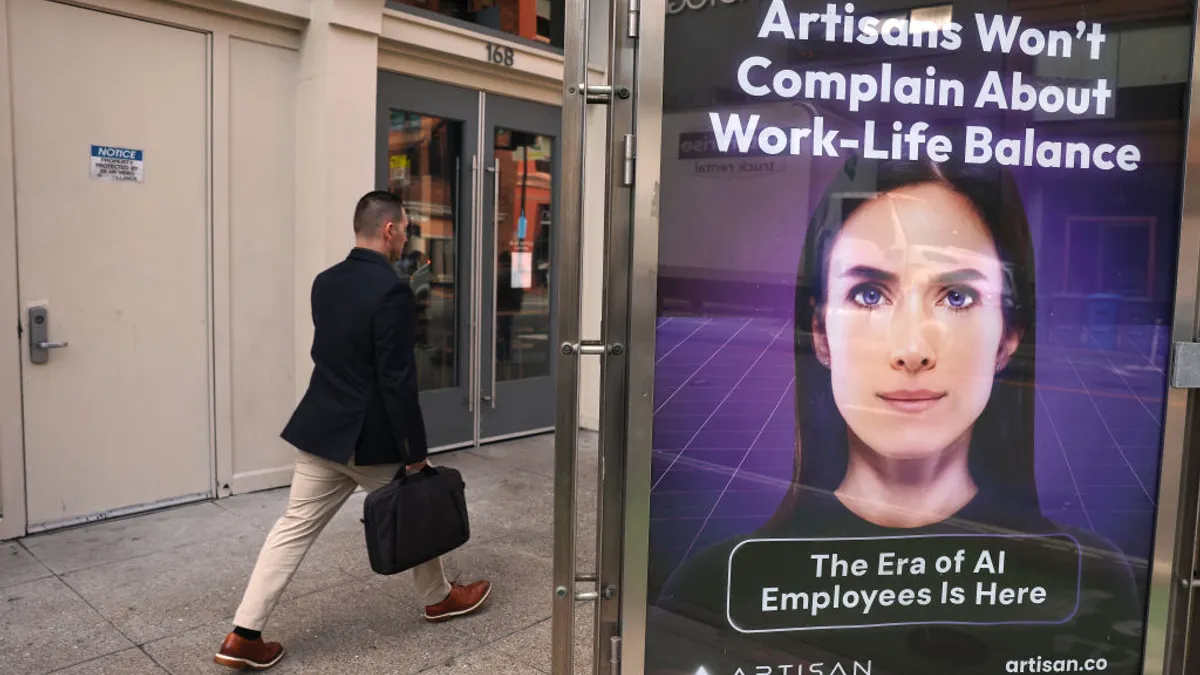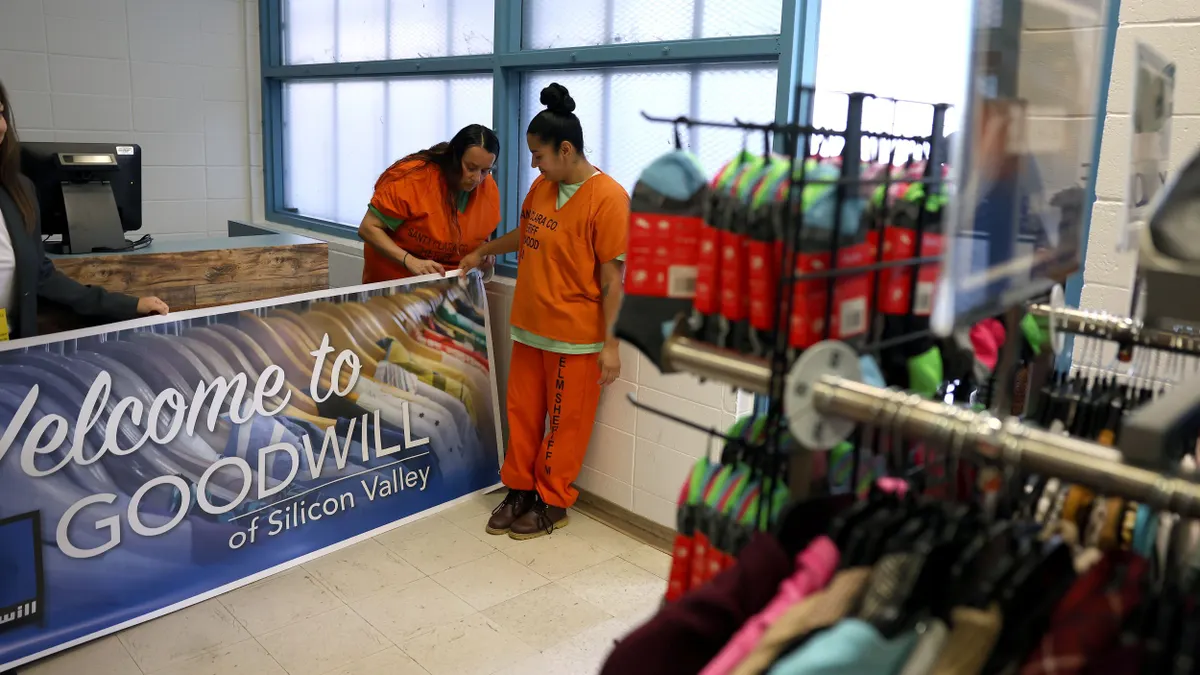Editor's note: Earlier this week, we brought you 4 learning trends to watch in 2018. Today, we look at what's on the horizon for recruiting.
As employers work to avoid costly hiring mistakes, create more inclusive workplaces, shrink the skills gap and speed up hiring processes, cutting-edge solutions are coming into play. So what should recruiting and HR professionals be looking for in the coming year? As you might have guessed, many of the solutions are technology-based, but some rely as much on human intelligence as artificial intelligence (AI).
1. Predictive analytics
What if you could predict, with a fair amount of accuracy, which candidate out of 10 applicants would be the best fit for your organization? That’s what predictive analytics allows you to do. Greg Moran, president and CEO of Outmatch, a Dallas-based firm specializing in hiring, retaining and developing talent, told HR Dive that the rising use of predictive analytics is the biggest recruiting trend to drive productivity and profitability in 2018.
“How do we know? We surveyed nearly 200 HR professionals and they told us loudly and with one voice: there is a better way to hire, and it starts with predictive analytics,” says Moran.
Of those HR professionals Outmatch polled, 95% said access to analytics that could predict candidates’ performance and on-the-job success would be helpful. But only 35% said they’re using data and analytics to hire employees, and only 44% are using that information to create employee development plans. Moran says these survey results point to what he describes as a massive disconnect between the way companies are directing their human capital and the way they would like to do so.
“By collecting early performance data on new hires, and matching it against assessments, you begin to create a feedback loop that automatically updates and continually refines the profile of a successful employee,” he says. In short, employers can identify their top performers in advance, from the new hire to the seasoned employee.
Workforce analytics include both bottom-line and recruiting measurements. Moran says analytics provide answers to such questions like "What’s the ROI on HR investments?" and "How do employees drive business results and contribute to the bottom line?"
He adds that with actionable workforce analytics, companies can measure the impact of revenue growth, and in the process, establish HR as a key player in corporate profitability and success.
HR must ensure, however, that analytics are used in a nondiscriminatory manner. Conclusions drawn from data can have a disparate impact on protected classes — and the U.S. Equal Employment Opportunity Commission has its eye on that possibility.
2. Diversity hiring
Discrimination in the workplace is neither new nor rare. Last year saw an inordinate number of sex discrimination and harassment allegations go public and end up in litigation. Now more than ever, diversity hiring needs to be a priority.
Miriam Dushane, managing director at Linium Recruiting, a recruiting firm based in Albany, New York, agrees. She said the need to encourage and incorporate diversity in recruiting will become increasingly important in 2018.
“The savviest recruiters will understand that this effort is about more than following guidelines and ensuring compliance with regulations,” says Dushane. “True diversity is about embracing the concept of being inclusive, and of recognizing the value that a diverse workforce brings to enrich a company’s workplace, enhance productivity and grow its bottom line.”
It’s a concept that employers, especially those in the tech industry, have been slow to embrace. The authors of a new report from Ascend Leadership concluded that race is an even greater problem for tech firms than gender, with Asian, Hispanic and African-American women, respectively, being denied opportunities for advancement. In fact, black women have the least chance of even getting hired by those firms.
Dushane told HR Dive that recruiters must understand that diversity can refer to candidates of different genders, races, ages, religions, lifestyles and physical or emotional capabilities.
So how do recruiters successfully achieve diversity? Dushane says the process starts with:
- getting to know the various groups in society and, specifically, in your own community;
- doing outreach to learn about the issues that are important to them; and
- following up with candidates about how your organization and its culture are addressing their values.
3. Rethinking job postings
Federal agencies are on the lookout for job ads with discriminatory language, and state and local governments are increasingly limiting factors that employers may use to screen candidates.
To help employers remain compliant — and improve their diversity efforts — vendors have been turning to new tech. SAP, for example, recently introduced software that flags words in job postings that could be interpreted as biased and replaces it with neutral words. The software also aims to eliminate bias in performance reviews and payroll.
Glassdoor also took a stand this year against criminal history discrimination. It announced that it will reject job postings that discriminate against applicants with criminal records.
4. Gig economy
With a growing gig economy, recruiters might find themselves hiring independent contractors, freelancers and consultants with as much effort — or confusion — as hiring full- and part-time employees. MBO Partners predicts that 60% of the U.S. workforce will be part of the gig economy by 2027.
A ManpowerGroup survey found that a whopping 94% of respondents are open to the idea of working independently. These findings and employers’ expressed need for on-demand hiring (which allows them to adjust staffing levels with minimal expense) will likely pressure recruiters to scout for talented gig workers.
And as businesses shift their view of the workforce to include on-demand talent, technology is working to keep up. In July, Anil Dharni, CEO of Sense, a staffing platform, told HR Dive that initiatives are just beginning to target gig workers for improved methods of communication, for example. He said although gig workers expand in number each year, they had not been the focus of HR technologies. He said he expects that to change as the contingent workforce continues to grow.


















